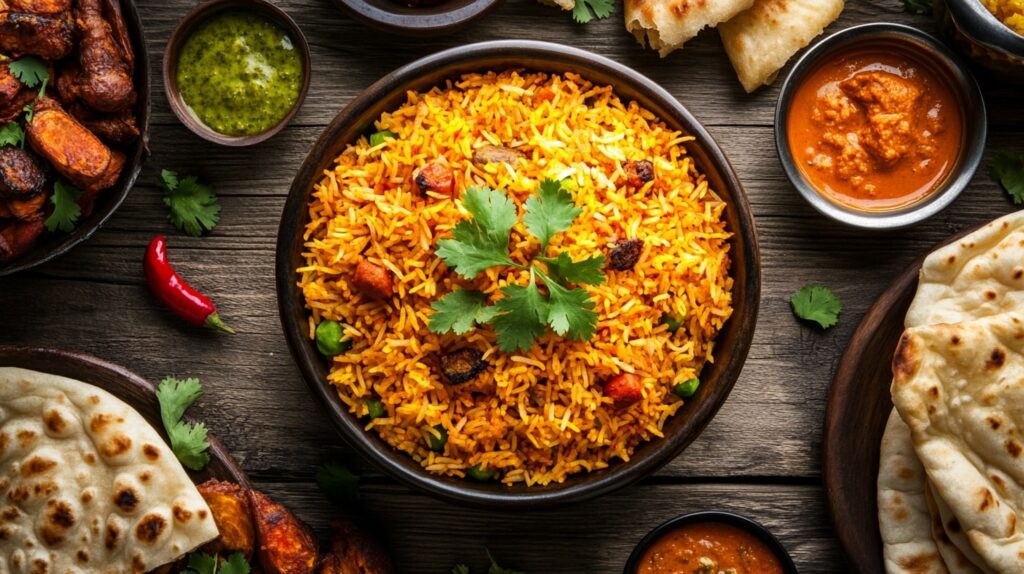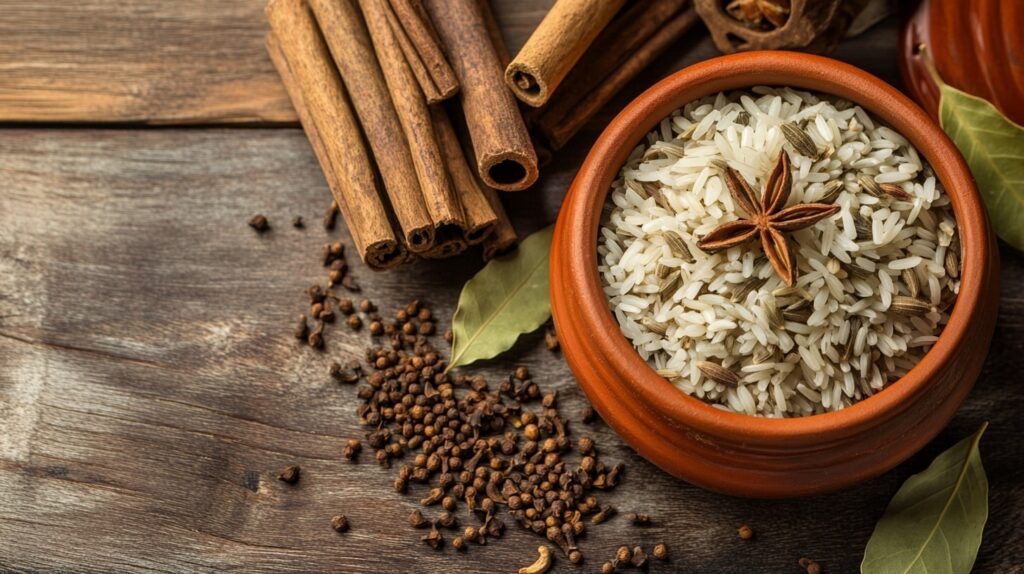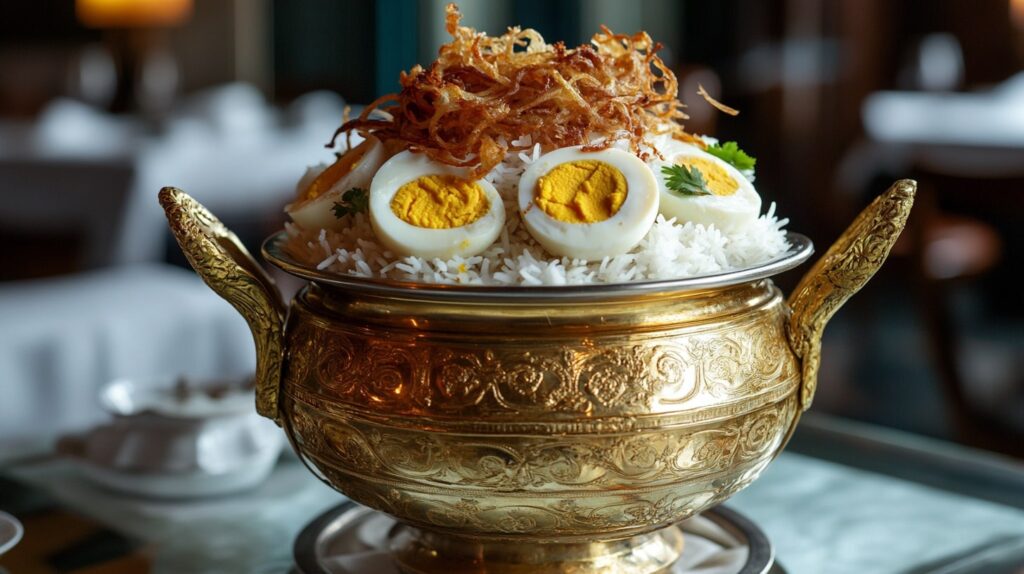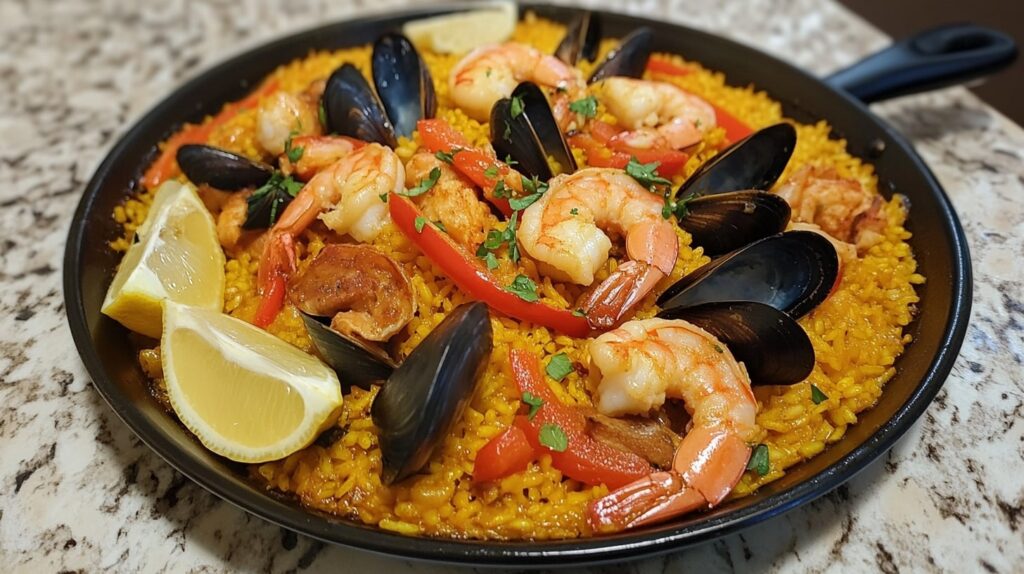
Table of contents
What Spices to Put in Rice?
Let’s be honest—plain rice can sometimes taste like, well… nothing. It’s filling, sure, but it rarely gets a standing ovation at the dinner table. The good news? It doesn’t have to be that way! Adding the right spices can transform a bland bowl of rice into something extraordinary. 🌟
Whether you’re whipping up a quick side dish or creating a gourmet meal, knowing what spices to put in rice can make all the difference. From warm, earthy notes to zesty, vibrant flavors, spices turn ordinary rice into something worth savoring.
But which spices should you choose? Don’t worry—I’ve got you covered. Let’s dive into the flavorful world of seasoned rice and uncover the secrets to making it absolutely irresistible.
Why Seasoning Rice Is Important for Flavor, Aroma, and Delicious Dishes
Rice is like a blank canvas—neutral, versatile, and ready to soak up flavor. Without seasoning, it’s just… plain. But with the right mix of spices, it becomes a culinary masterpiece.
Why bother seasoning rice?
- Enhances Flavor: Spices add layers of taste, from sweet to savory to spicy.
- Boosts Aroma: Ever walked into a kitchen and instantly felt hungry? That’s the power of fragrant spices.
- Adds Visual Appeal: Who doesn’t love golden-yellow saffron rice or vibrant red paprika-tinted grains?
- Elevates Texture: Herbs and spices can add crunch, creaminess, or even a slight smokiness.
Think of it this way—seasoning rice is like adding accessories to an outfit. The right combination can take it from simple to stunning.
Best Spices to Add to Rice for Flavorful, Aromatic, and Tasty Dishes
Let’s get into the fun part—exploring the best spices for rice. Whether you’re looking for warmth, sweetness, or a bit of heat, there’s something for every taste bud.

Turmeric – Add Vibrant Color, Earthy Flavor, and Health Benefits to Rice
Turmeric is the Midas touch for rice. It turns plain grains into golden goodness. 🌟
- Flavor Profile: Earthy, slightly bitter, and warm.
- Best Uses: Perfect for Indian biryanis, pilafs, and Middle Eastern dishes.
- Tip: Add a pinch of black pepper to enhance turmeric’s health benefits.
“Turmeric doesn’t just make rice look pretty; it’s packed with antioxidants and anti-inflammatory properties.”
Cumin – A Warm, Nutty Spice to Enhance Flavor in Rice Recipes
Cumin brings warmth and depth, like a cozy blanket for your taste buds.
- Flavor Profile: Nutty, smoky, and slightly spicy.
- Best Uses: Great for Mexican rice, pilafs, and curries.
- Tip: Toast cumin seeds before adding them to release their oils and boost flavor.
“Cumin is like that friend who’s always reliable—simple yet impactful in any dish.”
Cinnamon – Add Sweet, Spicy Complexity to Rice and Biryani Dishes
Cinnamon isn’t just for desserts. It adds a sweet-spicy touch to savory rice dishes, too.
- Flavor Profile: Warm, sweet, and slightly woody.
- Best Uses: Ideal for Middle Eastern and Indian dishes like pilafs and biryanis.
- Tip: Use a cinnamon stick instead of ground cinnamon for a subtle flavor.
Bay Leaves – Infuse Rice with Subtle Herbal Essence and Aroma
Bay leaves are the unsung heroes of the spice world. They don’t shout for attention but quietly work their magic.
- Flavor Profile: Mildly floral and herbal.
- Best Uses: Stews, soups, and seasoned rice recipes.
- Tip: Remove bay leaves before serving—they’re for flavor, not chewing!
“Think of bay leaves as the background music in a movie—they set the tone without stealing the show.”
Saffron – Luxurious Aroma and Golden Hue
Saffron is the crown jewel of spices, and a little goes a long way.
- Flavor Profile: Floral, earthy, and slightly sweet.
- Best Uses: Paella, Persian rice, and Indian biryanis.
- Tip: Soak saffron threads in warm water or milk to release their full color and aroma.
“Saffron is the diamond of spices—expensive, rare, but worth every penny.”
Garlic Powder – Savory and Rich Taste
Garlic powder is the shortcut to bold, garlicky goodness without the hassle of peeling and chopping.
- Flavor Profile: Savory, pungent, and slightly sweet.
- Best Uses: Stir-fried rice, pilafs, and casseroles.
- Tip: Combine it with onion powder for an unbeatable flavor duo.
Paprika – Smoky or Sweet Enhancer
Paprika adds color, flavor, and a touch of drama to rice dishes.
- Flavor Profile: Sweet, smoky, or spicy, depending on the variety.
- Best Uses: Spanish paellas, Mexican rice, and Cajun-style dishes.
- Tip: Use smoked paprika for a BBQ-like aroma without the grill.
Cardamom – Exotic and Fragrant Spice
Cardamom is like perfume for food—delicate yet captivating.
- Flavor Profile: Sweet, floral, and slightly citrusy.
- Best Uses: Indian basmati rice, desserts, and teas.
- Tip: Crush whole pods for a stronger aroma, or use ground cardamom for convenience.
“Cardamom is the spice that whispers elegance—it’s subtle but unforgettable.”
Spice Comparison Table for Rice Dishes
| Spice | Flavor Profile | Best Uses |
|---|---|---|
| Turmeric | Earthy, warm, slightly bitter | Biryanis, pilafs, Middle Eastern rice |
| Cumin | Nutty, smoky, slightly spicy | Mexican rice, curries, pilafs |
| Cinnamon | Warm, sweet, woody | Indian and Middle Eastern dishes |
| Bay Leaves | Floral, herbal | Stews, soups, seasoned rice |
| Saffron | Floral, earthy, slightly sweet | Paellas, Persian rice, biryanis |
| Garlic Powder | Savory, pungent, slightly sweet | Stir-fries, pilafs, casseroles |
| Paprika | Sweet, smoky, or spicy | Spanish, Mexican, and Cajun rice |
| Cardamom | Sweet, floral, citrusy | Indian rice, desserts, teas |
Regional Variations of Spiced Rice Dishes Around the World
Rice is a global staple, but how it’s seasoned varies wildly across cultures. From spicy Indian biryanis to rich Spanish paellas, spices play a central role in defining regional flavors. Let’s explore some of the most popular spiced rice dishes from around the world and what makes them unique.
Indian Biryani – Rich, Spicy, and Aromatic Rice Layers for Authentic Flavors

Indian biryani isn’t just food; it’s an experience. Layers of fragrant basmati rice, marinated meat, and rich spices create a symphony of flavors.
- Key Spices Used:
- Turmeric 🌟
- Cardamom
- Cloves
- Cinnamon
- Bay leaves
- Saffron
“Biryani is like a love story—layers of flavor slowly unfolding with every bite.”
- Pro Tip: Always toast whole spices before adding them. It releases their oils, making the aroma even more intense.
Spanish Paella – Saffron-Infused Mediterranean Rice Dish with Seafood and Spices

Paella is a one-pan wonder, famous for its saffron-tinted golden rice and mix of seafood, chicken, and vegetables.
- Key Spices Used:
- Saffron 🌼
- Paprika
- Garlic powder
“Saffron in paella is like sunlight in a bottle—it brightens the whole dish.”
- Fun Fact: Authentic paella gets its flavor from the socarrat, the crispy layer of rice at the bottom of the pan.
Middle Eastern Pilaf – Subtle and Fragrant Perfection
Middle Eastern pilafs (or “pilavs”) are all about elegance and subtlety. The rice is cooked with broth and delicate spices, often topped with nuts and dried fruits.
- Key Spices Used:
- Cinnamon
- Cumin
- Cardamom
- Bay leaves
“Pilaf is the little black dress of rice dishes—classy, timeless, and always in style.”
Mexican Rice – Bold and Zesty Flavors
Mexican rice, also known as “arroz rojo,” gets its vibrant red color and spicy kick from tomatoes and chili powder.
- Key Spices Used:
- Cumin 🌶️
- Paprika
- Garlic powder
- Chili powder
“Mexican rice is like a fiesta on your plate—bright, bold, and full of personality!”
- Quick Tip: Add fresh cilantro and a squeeze of lime juice to brighten the flavors even more.
Tips for Blending Spices for Perfect Rice Recipes
Blending spices is like being a DJ—you need to balance highs, lows, and bass notes to create harmony. Here are a few tricks to help you mix spices like a pro:
- Start Small: You can always add more spice, but you can’t take it out! Begin with a pinch and adjust as needed.
- Balance Flavors: Pair warm spices (like cinnamon) with earthy ones (like cumin) for depth.
- Use Whole Spices: Toasting whole spices before grinding releases oils, making flavors richer.
- Experiment: Don’t be afraid to mix and match. Sometimes, the best combinations are unexpected!
How to Cook Rice with Spices for Maximum Flavor, Aroma, and Texture
Cooking rice with spices isn’t rocket science, but a few simple techniques can make all the difference.
Method 1: Infused Water – Simple Way to Add Spice and Aroma to Rice
Add whole spices, like bay leaves or cinnamon sticks, directly to the water while boiling rice. This method infuses the grains with subtle flavors without overpowering them.
“Think of it as brewing a tea for your rice—gentle, flavorful, and aromatic.”
Method 2: Tempering Spices
Tempering involves frying spices in oil or butter before adding rice. It’s a popular technique in Indian and Middle Eastern cooking.
Steps:
- Heat oil or butter in a pan.
- Add whole spices like cumin seeds or cloves.
- Let them sizzle until fragrant.
- Stir in the rice and coat it with the spiced oil.
“Tempering spices wakes them up—it’s like stretching before a workout!”
Method 3: Spice Mix Add-Ins
If you’re short on time, pre-mixed spice blends, like curry powder or Cajun seasoning, can do wonders. Just stir them into the rice while it’s cooking.
Common Mistakes to Avoid When Seasoning Rice
Spicing up rice is easy, but there are a few pitfalls to watch out for:
- Over-Spicing: Too many spices can overwhelm the dish. Stick to 2–3 main flavors.
- Not Toasting Spices: Toasting brings out aroma and flavor. Don’t skip this step!
- Using Old Spices: Stale spices lack flavor. Replace them every 6–12 months.
- Forgetting Salt: Spices need salt to shine—don’t leave it out.
- Adding Spices Too Late: Spices need time to infuse, so add them early in the cooking process.
Health Benefits of Spices Used in Rice Dishes
Did you know spices do more than just taste good? Many offer impressive health benefits:
| Spice | Health Benefit |
|---|---|
| Turmeric | Anti-inflammatory, boosts immunity 🛡️ |
| Cumin | Aids digestion and improves metabolism 🌿 |
| Cinnamon | Regulates blood sugar and fights bacteria 🩺 |
| Garlic Powder | Reduces cholesterol and supports heart health ❤️ |
| Paprika | High in antioxidants and boosts eye health 👀 |
| Cardamom | Detoxifies and improves respiratory health 🌬️ |
| Saffron | Elevates mood and reduces stress 😌 |
“Adding spices to rice isn’t just tasty—it’s a recipe for better health!”
Spices to Put in Rice for Special Dietary Needs
- Low-Sodium Options: Use garlic, onion powder, and herbs like parsley or cilantro instead of salt.
- Gluten-Free Choices: All spices mentioned here are naturally gluten-free—just check for additives in pre-mixed blends.
- Vegan-Friendly Flavors: Spice up plain rice with smoked paprika, cumin, or turmeric for plant-based perfection.
Explore More Flavorful Recipes and Cooking Tips
Love experimenting with rice and spices? 🌿🍚 Don’t stop here—check out more flavorful recipes and cooking tips on our site!
- Looking for healthy snack ideas? Discover the benefits and recipes of rice cakes that are perfect for quick bites.
- Curious about cinnamon’s role in cooking? Explore cinnamon types and uses to add more spice to your dishes.
- Want to boost flavor in other meals? Learn how to make delicious beef gravy from scratch and pair it with your rice dishes!
- Interested in gluten-free baking? Try this matcha muffin recipe with almond flour for a healthy dessert option.
These articles will inspire you to get creative in the kitchen and make every meal unforgettable! 🌟✨
Conclusion – Master the Art of Spiced Rice Dishes
Rice doesn’t have to be boring. With the right spices, it transforms into a dish that’s flavorful, fragrant, and utterly irresistible. From the golden glow of turmeric to the exotic aroma of cardamom, there’s no limit to the creative possibilities. 🌿
So, the next time you’re staring at plain rice, don’t settle for “blah.” Grab your spices, experiment with flavors, and create something magical. After all, good food doesn’t just fill your stomach—it feeds your soul. 🍚✨
